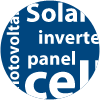Residents of the Sunshine State or those who live in the hot, beaming desert have likely given thought to solar-powered energy. Of course, year-round sunlight is most conducive, but even the cooler climates can take advantage of nature’s purest source of power. Learning how to use solar panels in your home can be overwhelming, so follow this guide to get started.
Terms You Need to Know
 Installing solar panels may be the most complicated energy-saving tactic, but it also has the largest payoff. If you’re ready to take on the project, there are a few terms to learn before you get started:
Installing solar panels may be the most complicated energy-saving tactic, but it also has the largest payoff. If you’re ready to take on the project, there are a few terms to learn before you get started:
Photovoltaic (PV) cell: The building block of solar panels, this electrical device converts light into electricity.
Solar panel: A compilation of photovoltaic cells, which are situated in a way that harnesses sunlight and transforms it into usable energy.
Inverter: The unit that converts direct current (DC) energy from the solar panel into an alternating current (AC) that’s compatible with the electricity system in your home.
Factors You Should Consider
 The top two factors to think about before diving deeper into solar power are 1) the climate in which you live, and 2) whether or not you have open and direct access to sunlight during the peak hours of the day (10 a.m. – 2 p.m.).
The top two factors to think about before diving deeper into solar power are 1) the climate in which you live, and 2) whether or not you have open and direct access to sunlight during the peak hours of the day (10 a.m. – 2 p.m.).
Once you’ve determined your location is perfectly suited for solar energy, you’ll want to calculate how many kilowatts you use on average each month (your utility bills should help). You’ll also want to know the surface area of your roof to help determine how many solar panels will fit on top.
Power You Can Replace
 Ideally, you’d power your entire home with solar-sourced energy. However, easing into it with smaller projects can still offer big benefits. From the simplest installation to the most complex, here’s where you can use solar panels around your home:
Ideally, you’d power your entire home with solar-sourced energy. However, easing into it with smaller projects can still offer big benefits. From the simplest installation to the most complex, here’s where you can use solar panels around your home:
Outdoor lighting: You’ve seen them at your local hardware store. Solar-powered torches can be easily placed in the ground to light walking paths or driveways. Advances in PV cell technology have made these miniature solar panels much more powerful than the first generation.
Indoor lighting: Solar-powered desk lamps, wall-mounted lights and floor fixtures are easy to install and require a relatively small investment.
Water heating: Solar water heating systems not only cut down on your energy bill, but they don’t contribute to any greenhouse gas emissions. Energy.gov recommends finding a solar-powered system certified by the Solar Rating and Certification Corporation. If you have a pool or hot tub, solar water heating is usually comparable to the cost of conventional systems. According to Energy.gov, heating a pool is the most efficient use of solar panels.
Home heating system: Known as an active solar heating system, this process uses solar energy to heat liquid or air. The hot liquid or air then travels through a collector, further heating up as it moves. These collectors are not your typical solar panel, but the concept is the same – just much more intricate. Solar liquid collectors are best used for central heating.
With several state and federal tax incentives in place, many homeowners have made the hefty investment to power their entire home. A Forbes.com article noted that installing solar panels can cut your carbon footprint by an average of 35,180 pounds of carbon dioxide each year – the equivalent to planting 88 trees. In money terms, you could save $84 on your monthly electric bill. Not to mention, the value of your home significantly increases with the smart decision to use renewable energy.


 The greatest thing about solar power is that it utilizes one of the most abundant natural resources we have. When you’re getting energy from the sun, it means you don’t have to pay for energy coming from some other source. You simply don’t need a power company to point some panels toward a giant ball of gas. According to
The greatest thing about solar power is that it utilizes one of the most abundant natural resources we have. When you’re getting energy from the sun, it means you don’t have to pay for energy coming from some other source. You simply don’t need a power company to point some panels toward a giant ball of gas. According to  One of the unfortunate things about solar power is that it utilizes one of the most abundant natural resources we have . . . for approximately half of the day every day. Battery-run units and models with energy storing capabilities can overcome the basic problem of utilizing energy from the sun overnight, but solar power’s nighttime challenges are stubborn. The basic fact is that most people like to have a cool home
One of the unfortunate things about solar power is that it utilizes one of the most abundant natural resources we have . . . for approximately half of the day every day. Battery-run units and models with energy storing capabilities can overcome the basic problem of utilizing energy from the sun overnight, but solar power’s nighttime challenges are stubborn. The basic fact is that most people like to have a cool home  If the energy storage function of your solar powered air conditioner works properly, it can do wonders for your energy lifestyle. As Green Builder Media
If the energy storage function of your solar powered air conditioner works properly, it can do wonders for your energy lifestyle. As Green Builder Media  Energy companies are threatened by solar power. The idea that people can independently store their own energy is an affront to utility companies’ core business model. As a result, several states,
Energy companies are threatened by solar power. The idea that people can independently store their own energy is an affront to utility companies’ core business model. As a result, several states,  The Babcock Ranch plans are incredibly ambitious. They want to build a city fueled entirely by the sun that is larger than the island of Manhattan. Babcock Ranch will have 18,000 homes, six million square feet of commerce, and ample space for trails, parks, and lakes—and K&P wants to build it over the course of just 25 years. Syd Kitson, chairman of the development group, said he wants to make Babcock Ranch the country’s most hikeable, bikeable, walkable city. Indeed, environmental friendliness is paramount for Babcock Ranch. Kitson said in
The Babcock Ranch plans are incredibly ambitious. They want to build a city fueled entirely by the sun that is larger than the island of Manhattan. Babcock Ranch will have 18,000 homes, six million square feet of commerce, and ample space for trails, parks, and lakes—and K&P wants to build it over the course of just 25 years. Syd Kitson, chairman of the development group, said he wants to make Babcock Ranch the country’s most hikeable, bikeable, walkable city. Indeed, environmental friendliness is paramount for Babcock Ranch. Kitson said in  Babcock Ranch will be the first city in America to be built on the sun. Of course, this doesn’t mean astronauts will attempt to set foot on a ball of gas that burns at 9900 degrees fahrenheit. It means that the cornerstone of Babcock Ranch will be the solar industry. Kitson has donated a plot of land that will host the FPL (Florida Power and Light Company) Babcock Ranch Solar Energy Center. That 440-acre plant, the cornerstone of the town, will provide 74.5 megawatts of solar capacity to the people of Babcock Ranch.
Babcock Ranch will be the first city in America to be built on the sun. Of course, this doesn’t mean astronauts will attempt to set foot on a ball of gas that burns at 9900 degrees fahrenheit. It means that the cornerstone of Babcock Ranch will be the solar industry. Kitson has donated a plot of land that will host the FPL (Florida Power and Light Company) Babcock Ranch Solar Energy Center. That 440-acre plant, the cornerstone of the town, will provide 74.5 megawatts of solar capacity to the people of Babcock Ranch. Project Sunroof’s creator, Carl Elkin, came up with the idea while volunteering for
Project Sunroof’s creator, Carl Elkin, came up with the idea while volunteering for  The final step in Project Sunroof’s service is to refer you to solar providers in your area. This may be the true genius behind Project Sunroof, because the solar providers pay Google for these referrals, which keeps Google’s shareholders happy. Currently, Project Sunroof only serves three U.S. cities: San Francisco, Fresno, and Boston, but they hope to expand their reach over time. The time is definitely right, as more and more people are turning to solar power for a reliable and affordable source of clean energy. In 2015’s first quarter, the number of U.S. solar system installations broke all records according to the
The final step in Project Sunroof’s service is to refer you to solar providers in your area. This may be the true genius behind Project Sunroof, because the solar providers pay Google for these referrals, which keeps Google’s shareholders happy. Currently, Project Sunroof only serves three U.S. cities: San Francisco, Fresno, and Boston, but they hope to expand their reach over time. The time is definitely right, as more and more people are turning to solar power for a reliable and affordable source of clean energy. In 2015’s first quarter, the number of U.S. solar system installations broke all records according to the